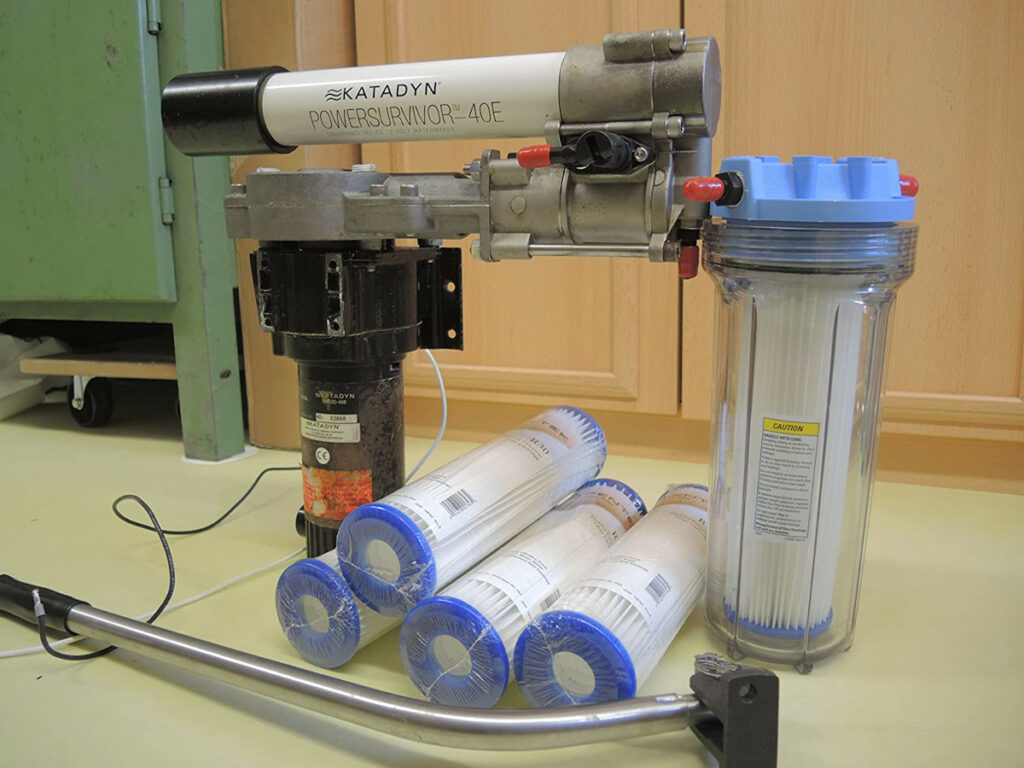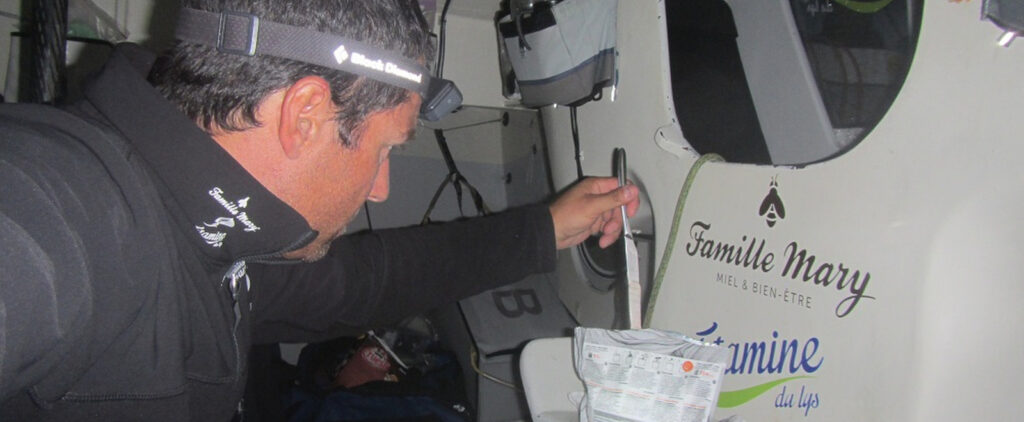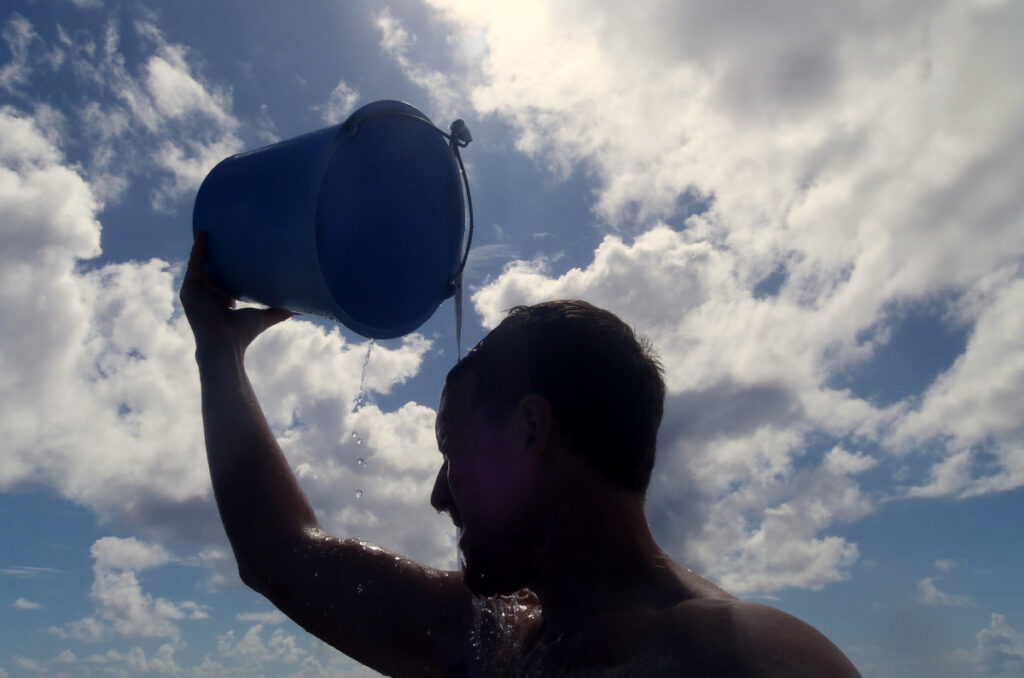Author: Dave Proctor for Global Solo Challenge
‘Water, water everywhere and not a drop to drink’
So says the poem, ‘The Rime of the Ancient Mariner’ by Samuel Coleridge.
And for the majority of us that have taken a mouthful of seawater, we know exactly what he was talking about.
Indeed, I recently discovered that if you were to drink seawater (at least more than just a gulp), you will become dehydrated!
You see our kidneys can only make urine that’s slightly less salty than seawater. So, in order to get rid of the extra amount of salt taken in by drinking seawater, we have to urinate more water than we actually drank.
You will become even more thirsty, and the water and nutrients will fail to reach the organs, and you will get things like muscle cramps. It then goes on to reach the stage of delirium and eventually death.
So basically, drinking seawater is not an option.
For offshore sailors access to clean drinkable water is and always was a major consideration in planning a voyage and, of course, this will be a subject for the entrants in the Global Solo Challenge (GSC).
An average of 2.7 litres per day is internationally recognised as the recommended intake of water, however, this is only a guide and a person’s actual requirement will depend on numerous factors. Their sex, their body size, the amount of water that an individual loses through sweating, the ambient temperature, the ambient humidity, and their workload.
So, when the GSC entrants are cruising along on a pleasant cool trade wind, relaxing, maybe reading a book or however, they wish to pass the time, their required water intake will be considerably less than say, when they are battling a tropical storm in an area of high temperature and high humidity.
Of course, included within this recommended intake, water is often obtained by eating foodstuffs that contain water, and from other drinks, e.g. tea and coffee. It should be noted, however, that beer and other alcoholic drinks should not be counted towards the recommended amount, as they have a diuretic effect.
A simple guide to whether you are correctly hydrated can be detected by the colour of the urine that you pass. It should be a pale yellow colour, if it is a darker colour this would probably be a sign of dehydration.
The GSC Regulations actually dictate that the entrants should have access to a minimum of 3 litres of drinking water per day.
The sources of water will tend to be threefold, either rainwater; water that has been stored on board prior to departure or desalinated water from an onboard machine.
Back in 1968, on his circumnavigation, Sir Robin Knox-Johnston originally planned to use the water that he had stored onboard. Unfortunately, in the early stages of the voyage, his water supply became contaminated by seawater and for the remainder of the circumnavigation, he had to rely on rainwater drained from his mainsail (Johnston actually survived on only one litre of water per day, which is well below the current medical guidelines).
Again, to prevent this scenario from recurring, the GSC regulations say that water should be stored in at least three separate compartments or in canisters, whereby if one or more becomes contaminated then the sailor will still have access to water. The regulations also make provisions for access to water, in the event of an emergency, including, that if required, the sailors should have the facility for the yacht to collect rainwater.
On board, Watermakers are obviously a preferred option for many sailors, and I envisage that many of the GSC entrants will be using these systems, with a back-up of stored water and rain collecting systems.
These systems work by a process of reverse osmosis.
In this system, the seawater is pressurised to force it through a semi-permeable membrane. This membrane allows pure water to ‘osmisise’ across into the clean water area and then into the yachts ‘clean’ water tanks, whilst larger molecules containing salt and other contaminants, both biological and non-biological remain in the saltwater area and will subsequently be discharged back into the sea.
These systems have many advantages over using water tanks or canisters in that, they are lighter, particularly at the start of a voyage. To give you an idea of how much lighter, let’s say a GSC entrant is envisaging a 200-day circumnavigation. We know that they require to have on board 3 litres per day so they will have to carry 600 litres of drinking water, which equates to 600 kgs of additional weight, apart from water to be used for any other uses.
An electrical watermaker unit would probably weighs about 15 kgs.

Obviously, there are power considerations and different machines have different requirements. Indeed, there are manual machines, where an hour’s pumping the crank would produce enough water for a couple of days (other machines have a manual option in case of a power failure).
These reverse-osmosis water machines are incredibly efficient and can have spectacularly high output. One aspect that should be borne in mind by anyone who uses them, is that they are so efficient that they also remove some of the trace elements that are normally found in water that our bodies need, and it would be advisable to speak to a dietician or nutritionist before relying on such a system for too long.
As I have said earlier, the production of water normally requires power, and to this end, the entrants to the GSC who intend to rely on watermakers will have to balance the unit’s power consumption against the power available from either the engine or the battery bank, together with their anticipated requirements, and then work out their individual needs as to produce and, also, to conserve water according to their situation.

Water use and conservation is a subject for individual sailors. As an example, for pure racing, where there is an emphasis on weight reduction, there are even freeze-dried foods that use seawater rather than rely on the yacht’s supplies of fresh water.
And of course, there is the consideration of personal hygiene and how clean the individual sailor will want to remain.
I suppose the advantage of the GSC being a solo challenge, is that there will be no one to complain about how bad you smell if you have not had a shower for a couple of days.

Original article here


























